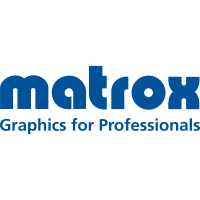NVIDIA GeForce 8800 Ultra vs Matrox Parhelia APVe
Comparative analysis of NVIDIA GeForce 8800 Ultra and Matrox Parhelia APVe videocards for all known characteristics in the following categories: Essentials, Technical info, Video outputs and ports, Compatibility, dimensions and requirements, API support, Memory, Technologies. Benchmark videocards performance analysis: PassMark - G3D Mark, PassMark - G2D Mark.
Differences
Reasons to consider the NVIDIA GeForce 8800 Ultra
- Videocard is newer: launch date 10 month(s) later
- 2.4x more core clock speed: 612 MHz vs 250 MHz
- 39.2x more texture fill rate: 39.2 billion / sec vs 1 GTexel / s
- A newer manufacturing process allows for a more powerful, yet cooler running videocard: 90 nm vs 150 nm
- 4x more maximum memory size: 512 MB vs 128 MB
- 2.2x more memory clock speed: 1080 MHz vs 500 MHz
- 128.6x better performance in PassMark - G3D Mark: 643 vs 5
| Specifications (specs) | |
| Launch date | 2 May 2007 vs 14 June 2006 |
| Core clock speed | 612 MHz vs 250 MHz |
| Texture fill rate | 39.2 billion / sec vs 1 GTexel / s |
| Manufacturing process technology | 90 nm vs 150 nm |
| Maximum memory size | 512 MB vs 128 MB |
| Memory clock speed | 1080 MHz vs 500 MHz |
| Benchmarks | |
| PassMark - G3D Mark | 643 vs 5 |
Reasons to consider the Matrox Parhelia APVe
- Around 9% better performance in PassMark - G2D Mark: 274 vs 252
| Benchmarks | |
| PassMark - G2D Mark | 274 vs 252 |
Compare benchmarks
GPU 1: NVIDIA GeForce 8800 Ultra
GPU 2: Matrox Parhelia APVe
| PassMark - G3D Mark |
|
|
||||
| PassMark - G2D Mark |
|
|
| Name | NVIDIA GeForce 8800 Ultra | Matrox Parhelia APVe |
|---|---|---|
| PassMark - G3D Mark | 643 | 5 |
| PassMark - G2D Mark | 252 | 274 |
Compare specifications (specs)
| NVIDIA GeForce 8800 Ultra | Matrox Parhelia APVe | |
|---|---|---|
Essentials |
||
| Architecture | Tesla | Parhelia |
| Code name | G80 | Parhelia-512 |
| Launch date | 2 May 2007 | 14 June 2006 |
| Launch price (MSRP) | $829 | |
| Place in performance rating | 647 | 649 |
| Type | Desktop | Desktop |
Technical info |
||
| Core clock speed | 612 MHz | 250 MHz |
| CUDA cores | 612 | |
| Floating-point performance | 387.1 gflops | |
| Manufacturing process technology | 90 nm | 150 nm |
| Pipelines | 128 | |
| Texture fill rate | 39.2 billion / sec | 1 GTexel / s |
| Thermal Design Power (TDP) | 171 Watt | |
| Transistor count | 681 million | 80 million |
Video outputs and ports |
||
| Display Connectors | 2x DVI, 1x S-Video | 2x DVI, 1x S-Video |
Compatibility, dimensions and requirements |
||
| Interface | PCIe 1.0 x16 | PCIe 1.0 x16 |
| Length | 270 mm | 168 mm |
| Supplementary power connectors | 2x 6-pin | |
API support |
||
| DirectX | 10.0 | 8.1 |
| OpenGL | 3.3 | 1.5 |
Memory |
||
| Maximum RAM amount | 512 MB | 128 MB |
| Memory bandwidth | 103.7 GB / s | 8 GB / s |
| Memory bus width | 384 Bit | 128 Bit |
| Memory clock speed | 1080 MHz | 500 MHz |
| Memory type | GDDR3 | DDR |
Technologies |
||
| SLI | ||










